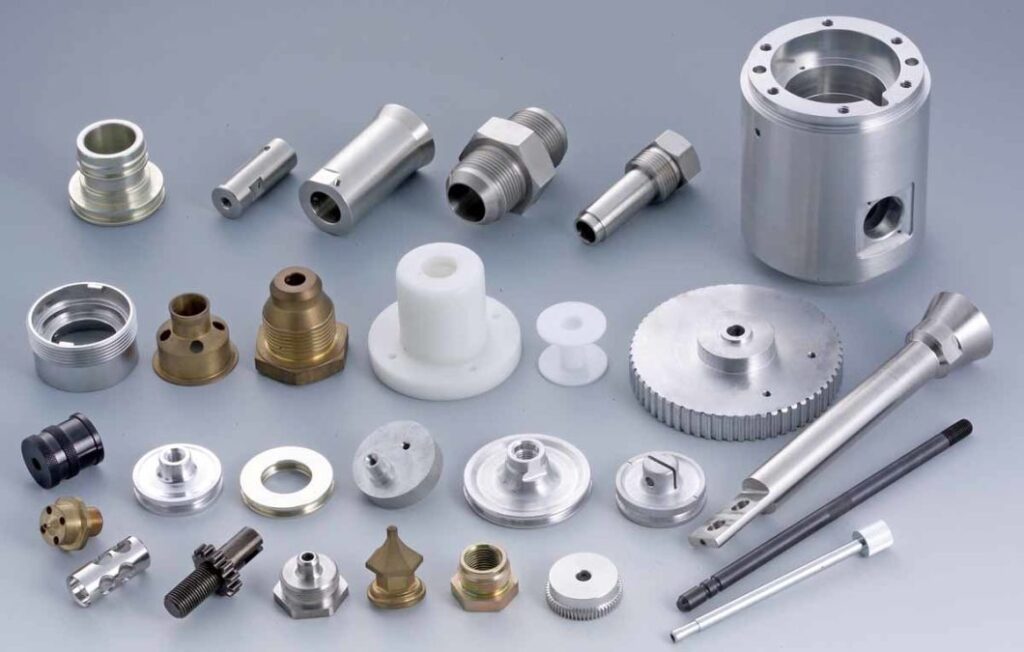Introduction:
“Turning” is a machining process in which a cutting tool is moved along the surface of a rotating workpiece to remove material and create a desired shape. In this process, parts can be produced with cylindrical shapes and precise dimensional control. The turning process can be performed on a lathe machine, which rotates the workpiece while a stationary cutting tool is moved along its surface. The resulting parts can be used in a variety of applications, such as the production of shafts, pipes, gears, and other machine components.
Advantages of turning parts:
Here are the some advantages of turning parts:
- Precision: Turning is a precision machining process that can produce parts with tight tolerances and smooth surface finishes.
- Versatility: Turning can be used to produce a wide range of parts with different shapes, sizes, and materials.
- High production rates: Turning operations can be automated, which increases production rates and reduces labor costs.
- Cost-effectiveness: Turning is a cost-effective process that is suitable for producing small to medium-sized parts in high volumes.
- Design flexibility: Turning allows for a wide range of design possibilities, including the creation of complex shapes and features.
- Improved dimensional accuracy: The process of turning helps to improve the dimensional accuracy of parts, as well as ensuring their consistency and repeatability.
- Material utilization: Turning can maximize the utilization of raw materials, reducing waste and costs.
What type turning part exists?
There are several types of turning parts, including:
- Cylinders: These are the most basic turning parts and are used in many applications, such as in the production of shafts, gears, and spindles.
- Cones: Conical shapes can be produced through turning and are commonly used in the production of bushings, bearings, and gears.
- Disks: Flat, circular parts can be produced through turning and are often used in applications such as clutch plates and gears.
- Spheres: Sphere-shaped parts can be produced through turning and are used in applications such as ball valves and bearings.
- Tapers: Parts with a gradual change in diameter can be produced through turning and are used in applications such as tapering shafts and spindles.
- Screws: Parts with threaded sections can be produced through turning and are used in applications such as bolts and screws.
- Complex shapes: Parts with complex shapes, such as those with multiple curves, can be produced through turning using multi-axis machining centers.
- Custom parts: Turning can also be used to produce custom parts to meet specific customer requirements and specifications.
Visit our site to Read More: https://yijinsolution.com/
Which material is best for turning?
The best material for turning parts depends on several factors, including the desired properties of the finished part, the type of turning operation to be performed, and the desired surface finish. Some commonly turned materials include:
- Steel: Steel is a versatile and widely used material for turning due to its strength, durability, and good machinability.
- Aluminum: Aluminum is a lightweight and corrosion-resistant material that is often used for turning parts requiring low weight and good surface finish.
- Brass: Brass is a soft and easily machined material that is often used for turning parts requiring good electrical conductivity and good appearance.
- Stainless steel: Stainless steel is a corrosion-resistant material that is often used for turning parts requiring good strength, durability, and surface finish.
- Plastic: Plastics are often used for turning parts that require low weight and good wear resistance.
- Titanium: Titanium is a strong and lightweight material that is often used for turning parts requiring high strength and corrosion resistance.
The best material for a specific turning application depends on the desired mechanical and physical properties, the operating environment, and the cost constraints.
Read More blogs: https://bestpopularnews.com/





More Stories
Jessica Stein: Review A Financial Visionary and Top Broker at Maplewells.ca
Decoding the Impact of AI on Digital Marketing: A Look at WordPress Multisite
Evading SEO Pitfalls: Amplifying your Business through an Experienced SEO Agency